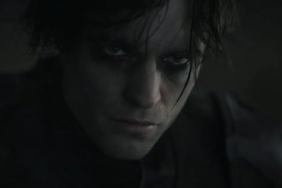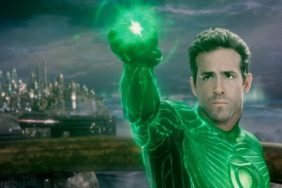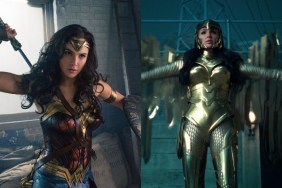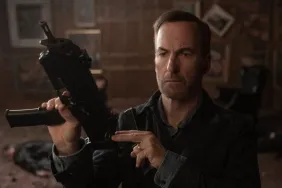I met director John Hyams when I moderated the Q&A for the opening night screening of Dragon Eyes with star Cung Le. Hyams agreed to an interview and we connected by phone. Hyams is the son of director Peter Hyams and he’s made a splash with the impressive sequel Universal Soldier: Regeneration. His follow-up, Universal Soldier: Day of Reckoning is highly anticipated, and Dragon Eyes is now available on VOD. Le stars as Hong, a prison protégé of Tiano (Jean-Claude Van Damme), who comes to the town of St. Jude to turn the local gangs on each other and kick people.
CraveOnline: Did Dragon Eyes take you away from Universal Soldier: Day of Reckoning for a bit?
John Hyams: Yes, it did. Basically, I pitched the idea for Universal Soldier. I pitched an idea to them which I then wrote a screenplay for. When the time came to sit down and discuss how we were going to go forward with that, the idea I had come up with was a rather challenging idea in that it was quite different from the other movies. It was almost a different kind of genre. It almost merged into a horror, much more of a horror/sci-fi thriller. Being that the idea and concept was so challenging, it was necessary to take more time to really develop the script. So Dragon Eyes came along at that time and in some ways, rather than taking me away from Universal Soldier, it kind of just pushed principal photography. But in another way it was actually kind of a blessing in disguise because the most important thing in making any movie is developing the script and the structure. That really is what makes or breaks your final product. So Universal Soldier was one experience where we were able to spend a long time in developing an idea and really planning out. We had to plan every setup of the movie beforehand because it’s a 3D movie and it invited a lot of different kinds of challenges. Conversely, Dragon Eyes was a movie that came up and I just jumped into the fire and called upon some of my episodic TV experience of working with very tight budgets, tight schedules and working on the fly and by the seat of your pants. So it was actually a great challenging year to have both these experiences, being very different experiences. As a result, I think with Dragon Eyes, the aesthetic was more or less dictated by that because it was almost like well, let’s take this opportunity to be a little more expressionistic stylistically and let’s try something out that we want to try out. Whereas Universal Soldier has a much more rigid aesthetic to it.
In Dragon Eyes, were the freeze frames and onscreen I.D.s for the characters in the script or something you came up with?
You know, it was not in the original Tim Tori script and then we did a rewrite where we had the idea of doing that. And then we actually took that idea out and again decided no, we’re not going to do that. That idea’s been done. It is sort of like this Leone thing and we didn’t want to go too close to that. but what we did ultimately find when we were cutting the movie was that my main change in the script, the biggest change I made was I cut down the dialogue by quite a bit. We made some of the characters much less verbose. Certainly Cung Le’s character, I thought it was important for him to not say too much, not reveal too much, not be a guy that is projecting emotion into the story because of course that type of character should be a vessel and everyone else projects onto him. So in chopping down so much dialogue and so much exposition, when we were cutting, you got to a point where we realized you know what? It’s kind of important that we know some of these character’s names. Not every character name was important but there were certain names that certain lines in the script hinged on. Like for instance, the name Tiano, Van Damme’s character, to understand the entire plot was to know that name. There’s a scene later in the movie where Hong [Le] is eating with the grandpa character and when Hong says, “I’m not Coakley.” And he says, “Well, I’m not Tiano. You kept calling me that.” If you didn’t know that name, because he never actually directly addresses him as Tiano, then the entire story of why Hong’s character goes to St. Jude is pretty hard to figure out. He was not the only one whose name mattered. That was just an example so there were a few places that you needed to know a couple of names. We said, “Well, we can either try to work that into lines of dialogue or do it that way. Or we can just say hey, we’re just going to give you these characters and we’ll give you more names than are actually necessary. It’ll just be this motif we embrace.” That was the reason for it. It allowed us to be less expositional with the dialogue.
How big was Tiano’s jail cell?
Bigger than a lot of apartments I’ve had, that’s for sure. I think that comes into the idea of the aesthetic of the movie which is we just were not going for realism. That was something we discussed with Nate Jones, the production designer, who came up with the design for that cell as well as the other cell which is kind of like a police station jail where Hong and Lord get into a bit of a skirmish. Each one of those sets is not a realistic looking prison. None of the sets in that are particularly realistic looking. I think that was always the idea, that we were going for a very saturated graphic novel aesthetic. That was my thought. The tones would be very washed out monochromatic colors like a comic book and that the feel and the tone of the movie were not going for realism but a certain kind of expressionism. The idea was to take that and also have hard hitting, but in a sense graphic novel violence. I wouldn’t say comic book violence but I’d say like graphic novel kind of violence. So the idea of Tiano having this great big huge cell, we built that set so obviously we could have made it any size we wanted, but we decided let’s make this almost kind of a gothic prison. We don’t exactly know where it is. The tonal palette of it is very much rooted in the past in some way because we never say that something is a flashback or something is not a flashback, but this movie has flashbacks within flashbacks. So the way we tried to accomplish that was by specific tone color-wise that will indicate what time period, what version of reality we’re seeing here. Yeah, Tiano’s cell was intentionally made to be something out of a Turkish prison or something, with the big skylight and light streaming into it. It’s a very baroque looking facility, not something you’d see in the United States.
Where do you find all the factories and warehouses where these climactic confrontations take place?
[Laughs] Well, in Regeneration, the refinery was kind of the reason for the story. In both Universal Soldier: Regeneration and Dragon Eyes, both of those were movies that were essentially created around a location. Regeneration was this amazing abandoned steel plant in Bulgaria called Kremikovtzi. That was literally the aesthetic of that movie was just it was supposed to be a nuclear power plant but really just a kind of gritty grey and black and blue industrial wasteland aesthetic. In Dragon Eyes, originally that sequence took place in a different location. Originally that climax, I believe in the script took place in the abandoned hotel which was where Mr. V [Peter Weller] would kind of do his business and meet with the rival gang leaders. Originally the climax was not really a fight climax. It was much more of a confrontation and shootout. Certain things took place, different things than what we ended up with. I felt like we needed a climactic fight to take us through this. The whole idea of bringing Lord and the Devil Dogs to that climax at the end was a new idea that evolved by saying you need to see a sequence where Hong has to go through an entire gang itself. So there was this sugar mill in Louisiana and again it provided a bunch of structures and different areas where you could hide people. It was almost again a very hyper reality type of location to stage this finale. I’ve certainly read a lot of reviews, a lot of people take an exception to the end of the movie. They feel like we wrapped things up too abruptly or we kind of play the tired Mexican standoff beat or it just was setting something up of Hong’s character playing the gangs against each other. Then it kind of concluded with just him fighting a bunch of guys, and I would say those are valid criticisms.
I’m certainly glad it ends with a big fight.
But there’s ultimately a thing about Dragon Eyes in my mind where to properly enjoy it and the point of the movie is really not about plot details. It certainly wasn’t in my mind. It really was about, in a sense, just about watching a certain set of scenarios play out with these kind of characters. To me that was just a scenario I wanted to play out. There may have been scenes that would have enhanced the story better that we could’ve done but to me the movie was as much about tone and feel and the vibe of the thing. The genre of the movie is really kung fu movie genre. It’s not kung fu but it is part of that genre of films. It’s like a kung fu movie but with a spaghetti western/Fistful of Dollars story. Again, to me it’s like we all know where it’s going and we know that he’s got to face off with the main bad guy is Mr. V, Peter Weller. You’re not going to be able to have a fight between Cung Le and Peter Weller and have it cinematically satisfying. So we needed to create some other things that were going to have to go down there.
I saw the beginning of Universal Soldier: Day of Reckoning at ActionFest, and I won’t spoil it but is the idea of the sequel that the characters we know are going to be very different?
Different from who they were before? I feel like the point of the movie to me is where we left off after Regeneration and imagining what would become of these characters? What is the direction that these characters would go from this point forward. It really was taking into account where the last movie left off, specifically where we left off with Luc Deveraux. So we’re not re-imagining this character at all. To me it’s actually staying faithful to the idea of what I believe could become of the main character after we [last] met him.
Do you have Scott Adkins, Van Damme and Dolph Lundgren all fight each other?
Well, certainly everyone gets a chance to fight. All together? Not necessarily but when you see the movie you’ll understand why. Every fight in that movie is very intentional and very much a part of the hero’s journey. That story, unlike Dragon Eyes, to me I really wanted to make a movie that was really very much about plot and very much about the story. We spent a lot of time, not just me, but myself, the writers, Jon Greenhalgh and Doug Magnuson, and Moshe Diamant who I share story credit with because he and I developed this story. So the story was incredibly important. I know this doesn’t answer your question about Van Damme fighting with Adkins and Lundgren at the same time, but what it does say is that every fight in the movie, there’s no action scene just for action scene’s sake. There are steps along the way that our protagonist takes on his journey to discover not only the answers of the movie but also who he is.
Could Day of Reckoning be the end of the Lux Deveraux story?
Not necessarily. Not necessarily. I mean, you’ll see it leaves open, or I think it raises a lot more possibilities for all of these stories to continue. So I wouldn’t say it’s necessarily the end of the Luc Deveraux story.
Are there more point of view sequences in the movie like the opening we saw from Scott Adkins’ point of view?
Well, there are some more but that was not just a stylistic choice. When you watch the movie, when you get to the end of the movie, there’s a reason why that scene is playing in POV. It’s not like the whole movie plays that way at all. There are a few selected moments that do but again, there’s also a reason for it. That movie’s a tough one to talk about without revealing too much so I’m going to have to stay cryptic about it. When ActionFest was asking for a sizzle reel or a scene to show from the movie, there was a number of different scenes, different fight scenes and big action scenes that they wanted, but to me every one of those contains a spoiler one way or another, so I just felt like the best tease you could give the audience even though it’s not a traditional action scene is that opening scene because I think it raises all these necessary questions you want the viewer to come into the movie with.
Well, that’s a spoiler too, the reveal of Van Damme.
Right, but again it’s a spoiler, but it’s a spoiler in the first five minutes of the movie. That scene is the question that the rest of the movie answers. The question is why are we seeing this character do this thing? It’s the kind of spoiler that I wouldn’t shy away from because that’s kind of the setup for the whole story.
And they might play this one in theaters?
Yeah, we hope so. We’ll see how that all plays out but we hope so. I’m very proud of the movie and what we accomplished with it. I wanted to challenge myself with the movie and challenge the fans of the movie too, with hopes that they will appreciate the effort that we didn’t just try to go the usual way with it.









